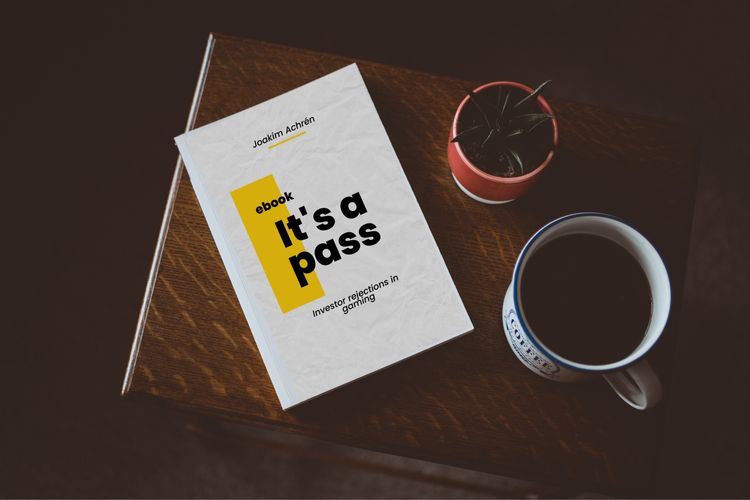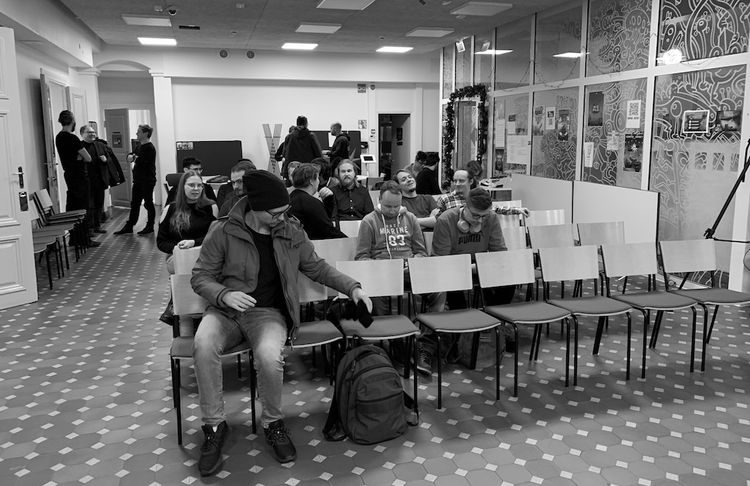EGD News #95 — Jobs to be done

Hi there,
It’s Joakim here. Greetings from Helsinki! This week I’m changing the format a bit and I’m starting off with a short essay on an important topic.
🥤 Jobs to be done
Why are people picking up certain games from the App Store? And when you are developing your live game and running live-ops, how do you make sure you have the right offering?
I think that one of the best ways to understand consumer motivations in gaming is to understand the Jobs-To-Be-Done (JTBD) framework.

In an HBS article from 2006, Clayton Christensen, author of The Innovator’s Dilemma, illustrates the JTBD framework in its fullness as he talks about how the research was conducted to increase the sales of milkshakes for a fast-food chain.
The crux of the analysis was to focus on the job, not the customer.
Initially, the fast-food chain had researched the demographic who bought milkshakes. They’d surveyed the demographic on product feature ideas, i.e., thicker, more chocolaty, cheaper, or chunkier milkshakes. Then they proceeded to implement the features that scored well. No impact.
Soon, a new research team went in, focusing on the job: why people “hired” the milkshake.
They found that 40 percent of all milkshakes were purchased in the early morning. They decided to focus on this to understand the job that the milkshake was hired to do.
Most bought it to do a similar job: They faced a long, boring commute and needed something to make the drive more interesting. They weren’t yet hungry but knew that they would be by 10 AM; they wanted to consume something now that would stave off hunger until noon. And they faced constraints: They were in a hurry, were wearing work clothes, and had one free hand (at most).
This job definition was great, but it didn’t reveal everything. The team went to work to define the competition and why they failed in their job. This would allow them to hone in on the right improvements. They asked, “When you didn’t buy a milkshake, what did you buy instead?” and “When you didn’t buy anything, what was the experience like?”
Bagel: Sometimes they bought a bagel. But bagels were too dry. Bagels with cream cheese or jam resulted in sticky fingers and gooey steering wheels.
Banana: Sometimes, these commuters bought a banana, but it didn’t last long enough to solve the boring-commute problem.
Doughnut: Doughnuts didn’t carry people past the 10 AM hunger attack.
The milkshake, it turned out, did the job better than any of these competitors. Why?
A) It took people twenty minutes to suck the thick milkshake through the thin straw, addressing the boring-commute problem,
B) they could consume it cleanly with one hand. By 10AM, they felt less hungry than when they tried the alternatives, and
C) it didn’t matter much that it wasn’t a healthy food because becoming healthy wasn’t essential to the job they were hiring the milkshake to do.
The new research was better since it asked the right people the right questions to get to the right features to implement.
Once they understood the jobs the customers were trying to do, it became apparent which milkshake improvements would get those jobs done even better and which were irrelevant.
The team then proceeded to implement the improvements.
First: How could they tackle the boring-commute job? Make the milkshake even thicker, so it would last longer. And swirl in tiny chunks of fruit, adding a dimension of unpredictability and anticipation to the monotonous morning routine.
This lead to improvements from the emotional aspects.
Second: Just as necessary, the restaurant chain could deliver the product more effectively by moving the dispensing machine in front of the counter and selling customers a prepaid swipe card so they could dash in, “gas up,” and go without getting stuck in the drive-through lane.
This lead to improvements from the functional aspects.
Once they’d created improvements for the 40%, they would go and tackle the next biggest group’s job with other products. They avoided milkshake improvements for other groups because it could create a one-size-fits-none product and lead to random results.
As Christensen says: “By understanding the job and improving the product’s social, functional, and emotional dimensions so that it did the job better, the company’s milkshakes would gain share against the real competition—not just competing chains’ milkshakes but bananas, boredom, and bagels.”
All these dimensions are similarly applicable to gaming. There’s competition on many levels, and you need to understand those levels before you embark on improvements to your games.
Example: Match-3 games
The majority of Londoners played Candy Crush on the tube. Why they went back to CC? Because it supported offline gameplay, whereas other games required online connectivity.
Others might research feature ideas, playtest ideas that the team had come up with. Players loved it, it was a thumbs up. Then, once released, no impact.
Instead: entertaining players on the tube where there’s no connectivity
Example: Hyper-casual market
There are many things that contributed to the birth of hyper-casual gaming as a viable business opportunity. One early jobs-to-be-done for mobile games came from Torsten Reil and his coined The Starbucks Test from 2012, where you’d want to finish a meaningful gameplay session on your phone while you wait for your coffee at Starbucks.
It was that job-definition that has now been taken to its extreme with hyper-casual. Here’s how you could look at the jobs-to-be-done for hyper casual
- The amount of who love to hyper-casual game is enormous, hence low CPIs
- They love to install lots of games
- They consume them quickly, extremely easy to pick up and play, instant fun
- They aren’t looking for a hard challenge, they are looking for entertainment
📹 Webinar w/ InvestGame and Aream & Co
This week I did a webinar with Anton Gorodetsky from InvestGame and Micha Katz from Aream & Co and we talked about the numbers from H1 of 2021 for the games industry. The industry saw explosive growth in terms of volume and size of M&As, private investments and IPOs.
The topics that we covered included
- The most interesting trends of H1 or 2021
- Where things were growing and weren’t growing
- How public markets can and cannot evaluate gaming
You can watch the recording from the webinar by going here. InvestGame’s full report from the first half of 2021 is available here.
🎙 Podcast w/ Klaas Kersting
This week on the podcast, I talked with Klaas Kersting, who is the founder and CEO of Phoenix Games, a new kind of European gaming conglomerate, with six games studios under its belt. In this discussion with Klaas, we talk about luck, and taking advantage of lucky moments, how the mobile games industry has evolved, what characterizes teams that can go from zero to hugely profitable, and what well done mergers and acquisitions looks like in gaming.
Klaas share so many interesting insights, but I wanted to share one of my favorite highlights from the discussion.
Have you seen entrepreneurs take advantage of luck? Have you seen instances where it plays out in their favour?
I have to mention Ilkka (CEO of Supercell). I was lucky enough to accompany him on this journey for a little bit and in a passive role. But what I really enjoyed there was the experience, dedication, and focus of that team that could not be derailed, whatever came their way.
And while maintaining the flexibility, and the opportunistic approach to quickly realise if something doesn’t work, [they said] “we should do something completely else.”
I invested in Supercell, back in the days when they were still doing hardcore games on Facebook, as we all know, that thread didn’t work out. And they were smart and self reflected enough to do that, and then completely run the ship in a completely different direction, and execute on that brilliant.
In the end, it’s always about the people, the people that you surround yourself with the people that bring strength weaknesses network to the table that complement your strengths and weaknesses, and challenge you to be a better version of yourself. And I think that is the underlying pattern that forces luck to some extent.
Listen to the full episode by going here.
📃 Articles worth reading
+ The FTUE as the Hero’s Journey — “The first action that the player is allowed to take within your game needs to satisfy both needs, for Autonomy and Competence. The action that the player takes needs to feel meaningful in order to meet the need for Autonomy. Furthermore, the player needs to feel in control.”
+ Metaverse Has Always Been a Dystopian Idea — “Facebook will pivot from being a website that is accessed through phones and laptops, Zuckerberg says, to a next generation computing platform where the focus is on a user’s “presence,” and is accessed through VR via Facebook’s Oculus headset, or other Facebook products like Portal. “I think over the next five years or so,” Zuckerberg told the Verge’s Casey Newton, “we will effectively transition from people seeing us as primarily being a social media company to being a metaverse company.””
+ On building a tribe — “My team is 100% committed to passion, especially about helping women by removing stigmas and empowering them to make the most of every day. When you mix that with an autonomous culture, everyone works hard. Having people passionate about a common goal is key in cultivating a great environment. As a result, empathy is also a common denominator. “
+ How to find your zone of genius — “A lot of people find themselves spending time on tasks that drain their energy. But there’s another way: to find your zone of genius, and to progressively move to a job where you spend 80% of your time in it.”
💬 Quote that I’ve been thinking about
“It is the individual who is not interested in his fellow men who has the greatest difficulties in life and provides the greatest injury to others. It is from among such individuals that all human failures spring.” — Alfred Adler
Sponsored by Pollen VC
Pollen VC is the leading provider of debt financing for mobile app and game developers. They also provide a suite of free, online tools to help developers improve their understanding of financing strategies. With a focus on three key areas — user acquisition planning, unpacking confusing financial jargon, and capital efficiency — the initiative is helping equip developers to make more informed decisions on financing and growth.
Check out their newly launched CFO Resources page here.
This newsletter is sponsored by Opera Event
Looking for some great new authentic video creative? Try something totally new with Influencer Generated Content (IGC) by Opera Event. Influencers or actors will make specific creative content for your games and Opera Event will deliver you high-quality video ads that highlight the best parts of your game.
Note! You get a free video with the purchase of 4 or more videos. Remember to say that Elite Game Developers sent you!
Go to www.getigc.com to see some examples and get more information.
If you’re enjoying EGD News, I’d love it if you shared it with a friend or two. You can send them here to sign up. I try to make it one of the best emails you get each week, and I hope you’re enjoying it.
I hope you have a great weekend!
Joakim





